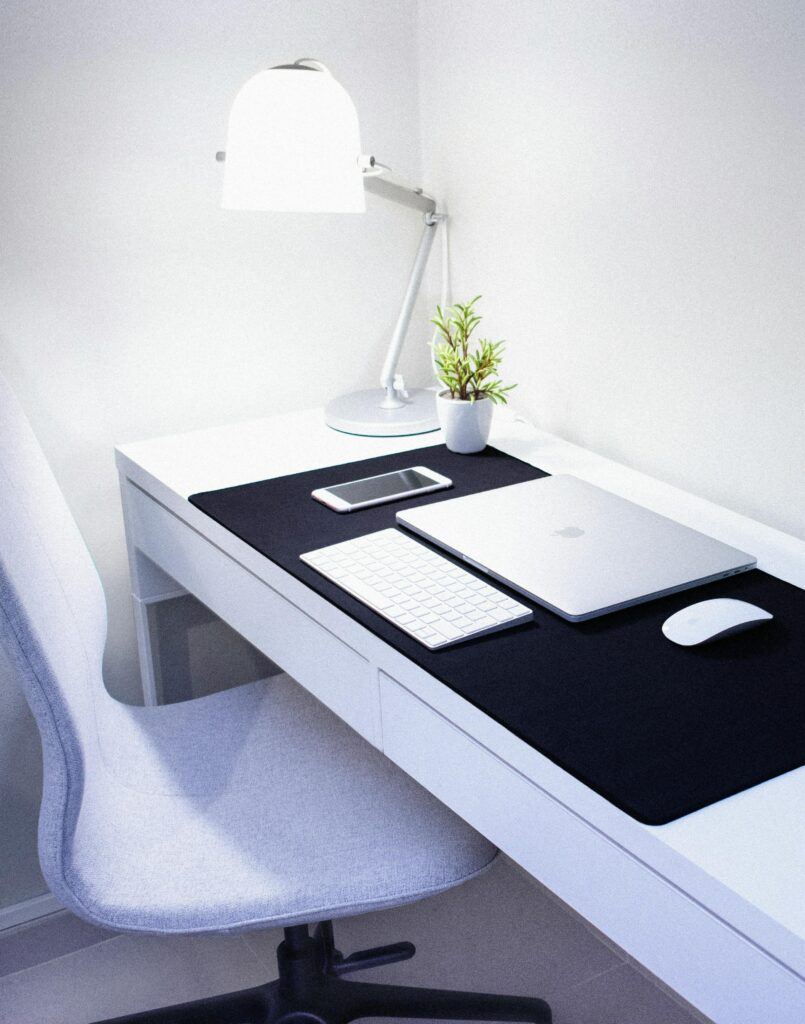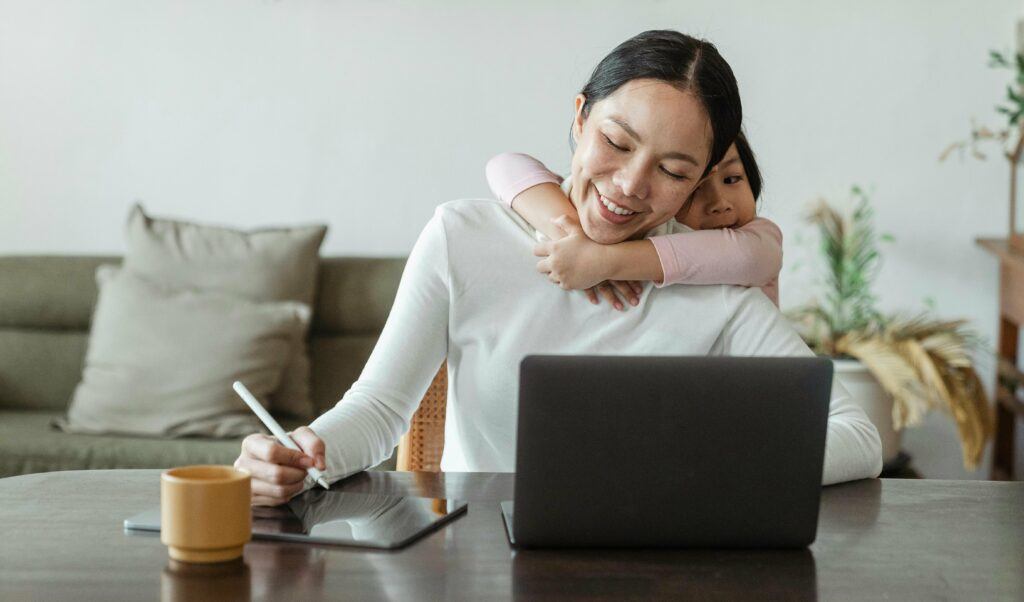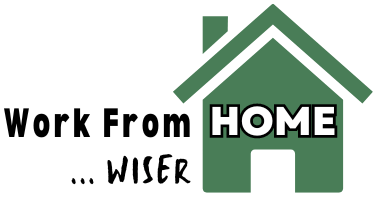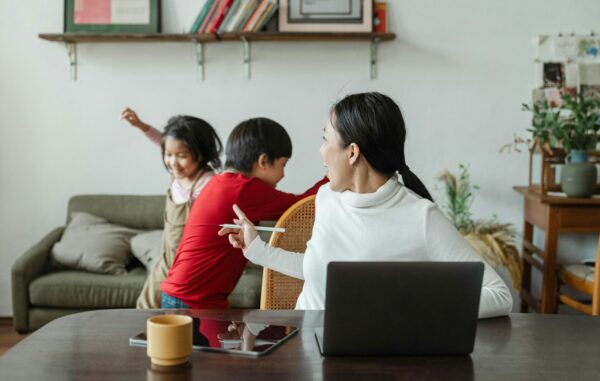Work dynamics have evolved and, for many of us, home has become the new office.
Though often sought after, this shift to working from home brings with it a unique set of challenges. Chief among them is creating a distraction-free work area.
A well-considered home workspace is more than just a desk and chair in a quiet corner. For you to achieve and maintain professional success it must be a space where focus and productivity flourish.
But nurturing productivity at home isn’t always simple.
Let’s consider the fundamentals of creating a distraction-free work area at home.
Creating a distraction-free work area at home.
• The first step is assessing your needs
• Designing a minimalist workspace
• Incorporating technology to enhance productivity
Throughout this post you will find links to other Work From Home Wiser articles. Each article amplifies on various ideas introduced in this piece and will help you progress toward achieving your ideal WFH environment.
The First Step is Assessing Your Needs
Let’s begin with a thoughtful look at what you need to create a home office that resonates with your work style, supports your professional responsibilities, and helps you keep a lid on disturbances and interruptions. Before you buy any fancy ‘productivity-boosting’ gadget, start with a bit of self-assessment.
What distracts YOU? What pulls your attention away from work? The pile of dishes you can see from your desk? The persistent buzz of your phone? From layout to furnishings to tech, your home workspace should seek to minimize distractions.
What is YOUR typical workday like? Consider what your typical or, better yet, ideal workday looks and feels like. Do you thrive on multiple monitors, or do you perform best with a simple, single-laptop setup? Are you frequently on video calls necessitating a presentable background and good lighting? The rhythm of your workday should influence the layout and tools you choose for your space.
What do YOU need to work comfortably? Here ergonomics is key. That thrift store chair might have character, but does it offer the support needed during long work hours? Proper posture and comfort affect your ability to concentrate not to mention your health. An investment in a quality chair or a desk at the right height is an investment in your productivity and well-being.
Having a clear grasp of these elements sets the stage for the next step: design.
Designing a Minimalist Workspace
With a clear understanding of your basic needs, you’re ready to focus on creating a distraction-free workspace.
Clutter, for me, is a leading distraction. Clutter divides my attention. (Look at all those things that need to be done!) Clutter makes me anxious. (Those things are teetering on the verge of being out of control.) Clutter derails my productivity. (If I am feeling inclined toward procrastination, decluttering is always a righteous excuse for not doing the work I really ought to be doing.)
For a head start on clutter, I favor a minimalist workspace design.
Minimalist design.
To explain minimalist design, who better to turn to than Architectural Digest.
In the 2023 article, "Minimalist Interior Design: Everything You Need to Know About This Intentional and Pared-Down Style," Architectural Digest associate digital features editor Katherine McLaughlin explains minimalist design as an aesthetic that emphasizes simplicity, functionality, and purposefulness - all desirable qualities for a productive workspace.
Minimalist style prioritizes simple lines, monochromatic color palettes, sparse furnishings, lack of clutter, and natural light. These attributes lend themselves to the creation of a space that "exudes peace, tranquility, and calm," an environment that fosters focus.
But even a minimalist style, should feel like you. Minimalist design doesn't have to be without personality, McLaughlin writes. While the minimalist design aesthetic is conventionally "defined by clean lines, limited ornamentation, a neutral color scheme, and natural materials," this doesn't have to mean only straight lines and white walls. Instead of neutral walls, paint yours bright pink, McLaughlin suggests. (No pink walls for me, but you can!)
One final benefit of minimalist design: By discouraging "unnecessary consumption" and focusing on what's "truly needed and important with little addition of anything else," minimalist design promotes sustainability, writes McLaughlin.
When I talk about minimalist design in a home office context, I’m referring to a workspace that includes only what I truly need to do my job well. For me, limiting visual and physical clutter that might otherwise compete for my attention is key to fostering a clear (and, hence, productive) mind. You may find the same to be true for you.
The selection of furniture and equipment is critical in a minimalist setup. I suggest choosing pieces that fulfill their purpose while resonating with simplicity and functionality. A desk with clean lines and sufficient space for your tasks, paired with a comfortable, ergonomically supportive chair should form the backbone of your minimalist home office.

Storage also plays a crucial role. Invest in smart storage solutions to organize your essentials without overwhelming your space. Shelves and drawers that tuck away paper, office supplies, and technology ensure that your immediate workspace remains free from distracting items.
Further improving your minimalist workspace involves making conscious choices about what to display. Limit desk accessories to what you use daily and consider a neutral color palette for your decor. Small plants can add life and a touch of color without adding to the visual clutter.
The act of decluttering is not a one-off event. To prevent items from accumulating on your desk, decluttering requires regular attention. At the end of each workday, spend a few moments resetting your workspace to its intended state of minimalism. Establish regular deep cleaning and decluttering sessions. Maybe it’s every Friday afternoon or the first Monday of the month—whatever works for you. But make it a habit. Consistent decluttering will ensure that your space stays organized and, more importantly, maintains its purpose as a productivity hub.
A distraction-free setup extends beyond your physical space and into your digital spaces. With your minimalist work area set, it’s time to think about how technology can be used to maintain this clean and productive environment.
Incorporating Technology to Enhance Productivity
It’s common to think of technology as a source of distraction but, when used wisely, it can actually be a powerful ally in maintaining focus.
This begins with carefully selecting the technology you bring into your work area. Ensure each piece serves a deliberate, productivity-enhancing purpose.
In addition to carefully curating your essential tech, you may wish to consider some some dedicated productivity apps. There are a number of apps specifically designed to reduce distractions and improve your work output and efficiency.
Task management and to-do list apps like Todoist are the first tools to consider. Such apps can help with time management and project tracking.
App blockers establish digital boundaries that protect you from a constant barrage of notifications and alerts and place you in control of when you are available. Apps like Freedom block distracting websites and apps on all your devices simultaneously.
There are even apps for the celebrated time management strategy, the Pomodoro Technique.
The Pomodoro Technique.
The Pomodoro Technique is a time management method developed by Francesco Cirillo in the late 1980s. Cirillo developed the Pomodoro Technique as a means of improving his work efficiency - putting boundaries around his working time (a valuable skill when working from home) while simultaneously increasing his productivity.
The Pomodoro Technique uses a timer to break work into 25 minute intervals, which are separated by short breaks. Here's a brief description of how it works:
1. Select your task.
2. Set a 25-minute timer.
3. Work on the task until the timer goes off.
4. Take a 5-minute break.
5. Repeat this format.
6. Every four pomodoro intervals, take a longer 15- to 30-minute break.
The Pomodoro Technique is designed to promote sustained concentration and stave off mental fatigue and is particularly useful for tasks that require extended focus. It can be customized to suit individual needs and work styles.
You can learn this effective time management strategy with a little reading and practice it using a basic egg timer, but there are also dedicated Pomodoro apps. An app like Pomodor can make this simple technique simpler.
Todoist, Freedom, Pomodor, and other productivity apps can help keep you on track. Choose what aligns with your workflow and keeps you moving forward.
Remember that staying on top of digital clutter is as important as physical decluttering. Just as a cluttered desktop can be a productivity killer, so can a mess of files and apps on your desktop computer, laptop, or phone. Regularly cleaning up unused digital files and uninstalling unneeded apps will keep your digital environment streamlined.
Final Thoughts
As important as design and decluttering are, creating a home workspace that’s free from distractions is not just about initial setup and ongoing maintenance. It’s also about setting boundaries and being aware of change.

If you live with others, they’re a part of your work environment too. Have a chat with your housemates or family about the importance of your work area. Setting those boundaries is a collective effort. A gentle reminder about the need for quiet or privacy during work hours can go a long way. Don’t forget about your four-footed housemates. What in your home office needs to be pet friendly? Or possibly pet proof?
Remember that a distraction-free work zone is a journey, not a one-time event. As your work demands shift, so might your ideal work environment. Stay on top of changes and adjust accordingly. Your workspace should evolve as your work evolves. Periodically reassess what’s in your space. Have new distractions crept in? To ensure productivity, it’s essential to keep your workspace aligned with your focus requirements.
The framework for your distraction-free work area should now be taking shape. Following the links in this post to other articles on Work From Home Wiser WILL help you take the next steps.
But as always DON’T HESITATE to share your thoughts and questions in the comments below.

